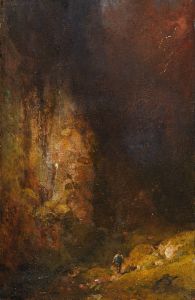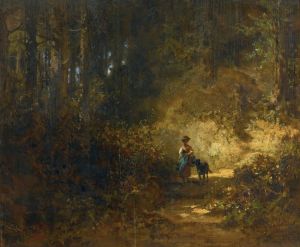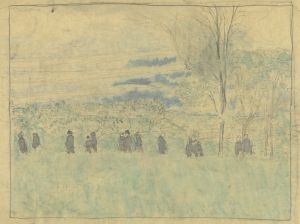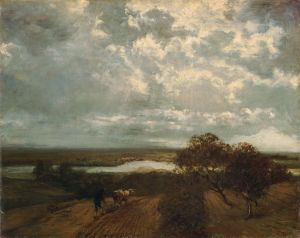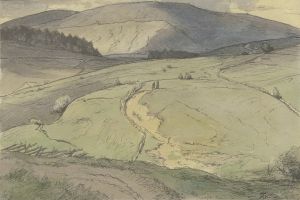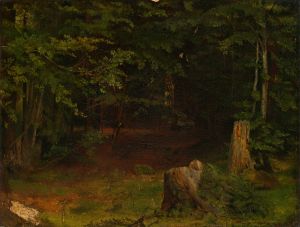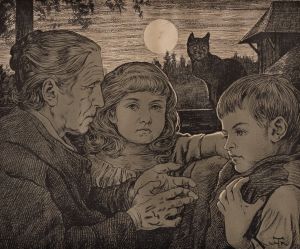
Der Wanderer
A hand-painted replica of Hans Thoma’s masterpiece Der Wanderer, meticulously crafted by professional artists to capture the true essence of the original. Each piece is created with museum-quality canvas and rare mineral pigments, carefully painted by experienced artists with delicate brushstrokes and rich, layered colors to perfectly recreate the texture of the original artwork. Unlike machine-printed reproductions, this hand-painted version brings the painting to life, infused with the artist’s emotions and skill in every stroke. Whether for personal collection or home decoration, it instantly elevates the artistic atmosphere of any space.
Hans Thoma was a German painter born on October 2, 1839, in Bernau in the Black Forest region. He is known for his landscapes, portraits, and genre paintings that often reflect a deep connection to nature and the German countryside. One of his notable works is "Der Wanderer," which translates to "The Wanderer."
"Der Wanderer" is a painting that exemplifies Thoma's characteristic style, which combines realism with a romantic appreciation of nature. Thoma's works often feature serene landscapes and figures that seem to be in harmony with their surroundings, and "Der Wanderer" is no exception. The painting depicts a solitary figure, presumably a wanderer, set against a backdrop of a lush, expansive landscape. This composition is typical of Thoma's work, where the human figure is often dwarfed by the grandeur of nature, emphasizing the theme of man's relationship with the natural world.
Thoma's technique in "Der Wanderer" showcases his skillful use of color and light to create a tranquil and contemplative atmosphere. The painting's palette is rich with earthy tones and vibrant greens, capturing the essence of the German countryside. The light in the painting is soft and diffused, suggesting either early morning or late afternoon, times of day that are often associated with reflection and introspection.
Hans Thoma's work, including "Der Wanderer," was influenced by various art movements and artists. He was initially trained in the academic tradition but later became associated with the Symbolist movement. Thoma was also influenced by the works of the Old Masters, such as Albrecht Dürer and Hans Holbein, as well as contemporary artists like Arnold Böcklin. These influences are evident in his meticulous attention to detail and his ability to imbue his landscapes with a sense of timelessness and spirituality.
Throughout his career, Thoma received recognition and acclaim for his contributions to art. He held various prestigious positions, including a professorship at the Karlsruhe Academy of Fine Arts and later as the director of the Kunsthalle Karlsruhe. His work was celebrated for its technical proficiency and its ability to evoke a deep emotional response from the viewer.
"Der Wanderer" is a testament to Hans Thoma's mastery of landscape painting and his ability to capture the essence of the natural world. The painting invites viewers to contemplate the beauty and tranquility of nature and to consider their own place within it. Thoma's work continues to be appreciated for its aesthetic qualities and its reflection of the cultural and artistic values of his time.
While specific details about the creation and exhibition history of "Der Wanderer" may not be extensively documented, the painting remains an important part of Thoma's oeuvre and a fine example of 19th-century German landscape painting.





![Tora-no-mon-gai; Aoi Hill, Outside the Tiger Gate [Tora-no-mon]](/imgs/213040/s/ando-hiroshige-toranomongai-aoi-hill-outside-the-tiger-gate-toranomon-6629cde0.jpg)
